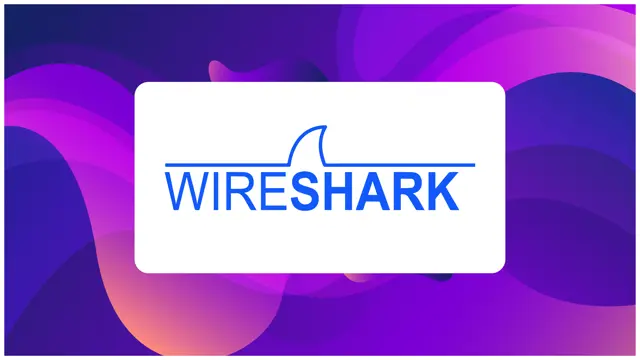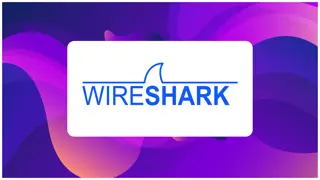
Wireshark | Wireshark Packet Analysis for Network Security
Wireshark- Learn TCP/IP, Network Protocols' Packet Capture & Network Analysis to troubleshoot
Oak Academy
Summary
- Reed Courses Certificate of Completion - Free
Add to basket or enquire
Overview
Welcome to “Wireshark | Wireshark Packet Analysis for Network Security” course.
Wireshark is a popular open source protocol analyzer that allows users to capture and read info from applications such as Sniffer, Snoop and Microsoft network monitor. What makes this software stand out is the fact that you can download it and and install it free of charge. It can be successfully used for network error troubleshooting, communications and software protocol development, but also for network analysis. Initially the tool was released in May 2006 as Ethereal, but due to trademark issues it was renamed to Wireshark soon after.
Wireshark 's main function is to help analyze the traffic on any network of your choice regardless of size.
Wireshark can run on a wide range of operating systems, such as Windows, OS X, OpenBSD, NetBSD, Free BSD, HP-UH, Solaris, UNIX and Linux.
Wireshark is a reference network protocol analyzer tool for open source network analysis. With its amazingly powerful functionality and user friendly interface, Wireshark makes it easy to see at any given time what's happening on a specific network and immediately take action if any type of suspicious activity is detected.
Throughout this course, we are going to look at examples of how to practically use Wireshark to solve network problems and isolate cybersecurity incidents. This skill will help all IT engineers to improve in their analysis and troubleshooting skills.
A network support specialist analyzes and troubleshoots problems with computer networks and keeps them secure, and many of these jobs will require the certification.
While learning the Wireshark interface, configure custom columns, filters, and coloring rules, learning how to customize the layout so we can spot problems fast. This course will give you the Wireshark interface and the experience you need to understand core protocols.
Identifying the advantages and disadvantages of existing network configurations. Implementing network security, standards, and protocols. Troubleshooting network issues, analyzing, developing software and communication protocol.
In this course you will learn;
Network Fundamentals
Packet Captures in Wireshark
Analyse Protocols in Wireshark
Packet Operations in Wireshark
ICMP Analysis
ARP Analysis
TCP Analysis
UDP Analysis
DHCP Analysis
DNS Analysis
HTTP Analysis
HTTPS Analysis
We will make sample applications for some of the topics covered in our course.
If you wish, you can improve yourself by using the topics covered in the lessons.
FAQs about Wireshark
What is the meaning of packet capture?
It is the process of intercepting a data packet that is moving through a network. The data packet helps in network analysis that is by analysis the data one can know the security status of the net.
Explain packet sniffers or network analyzers work?
Packet sniffers work by intercepting into a network that they can "see." What a packet sniffer can capture depends on the structure of the net. Ones a packet sniffer or network analyzer captures a packet they analyze it and present it in human readable form so that the user of packet sniffer can make use of the data.
It is wise to note a packet sniffer gets set into two ways. Some can be configured to capture all the data in this way we say they are unfiltered. There are those that are set to capture specific packets. We describe them as filtered.
What is the standard software tool that is used for packet sniffing or network analysis?
The most known network analysis or packet sniffing tool is called WireShark. It was known as Ethereal in the past and gathered datagram in real time have them in a form that you can read. It has color coding, filters, and other great features. It helps you analyze individual data packets and helps you go deeper in network matters.
Can hackers use packet sniffers?
Yes, they use packet sniffers to access your network. By packet sniffing, they can gather sensitive information and even spy on your communications with other persons in your network.
Certificates
Reed Courses Certificate of Completion
Digital certificate - Included
Will be downloadable when all lectures have been completed.
Curriculum
-
Network Fundamentals 46:40
-
Packet Captures in Wireshark 12:25
-
Analyse Protocols in Wireshark 15:39
-
Packet Operations in Wireshark 19:31
-
Wireshark - ICMP Analysis 07:10
-
Wireshark - ARP Analysis 14:41
-
Wireshark - TCP Analysis 23:22
-
Wireshark - UDP Analysis 13:32
-
Wireshark - DHCP Analysis 10:15
-
Wireshark - DNS Analysis 17:56
-
Wireshark - HTTP Analysis 19:20
-
Wireshark - HTTPS Analysis 10:16
Course media
Description
Welcome to “Wireshark | Wireshark Packet Analysis for Network Security” course.
Wireshark is a popular open source protocol analyzer that allows users to capture and read info from applications such as Sniffer, Snoop and Microsoft network monitor. What makes this software stand out is the fact that you can download it and and install it free of charge. It can be successfully used for network error troubleshooting, communications and software protocol development, but also for network analysis. Initially the tool was released in May 2006 as Ethereal, but due to trademark issues it was renamed to Wireshark soon after.
Wireshark 's main function is to help analyze the traffic on any network of your choice regardless of size.
Wireshark can run on a wide range of operating systems, such as Windows, OS X, OpenBSD, NetBSD, Free BSD, HP-UH, Solaris, UNIX and Linux.
Wireshark is a reference network protocol analyzer tool for open source network analysis. With its amazingly powerful functionality and user friendly interface, Wireshark makes it easy to see at any given time what's happening on a specific network and immediately take action if any type of suspicious activity is detected.
Throughout this course, we are going to look at examples of how to practically use Wireshark to solve network problems and isolate cybersecurity incidents. This skill will help all IT engineers to improve in their analysis and troubleshooting skills.
A network support specialist analyzes and troubleshoots problems with computer networks and keeps them secure, and many of these jobs will require the certification.
While learning the Wireshark interface, configure custom columns, filters, and coloring rules, learning how to customize the layout so we can spot problems fast. This course will give you the Wireshark interface and the experience you need to understand core protocols.
Identifying the advantages and disadvantages of existing network configurations. Implementing network security, standards, and protocols. Troubleshooting network issues, analyzing, developing software and communication protocol.
In this course you will learn;
Network Fundamentals
Packet Captures in Wireshark
Analyse Protocols in Wireshark
Packet Operations in Wireshark
ICMP Analysis
ARP Analysis
TCP Analysis
UDP Analysis
DHCP Analysis
DNS Analysis
HTTP Analysis
HTTPS Analysis
We will make sample applications for some of the topics covered in our course.
If you wish, you can improve yourself by using the topics covered in the lessons.
FAQs about Wireshark
What is the meaning of packet capture?
It is the process of intercepting a data packet that is moving through a network. The data packet helps in network analysis that is by analysis the data one can know the security status of the net.
Explain packet sniffers or network analyzers work?
Packet sniffers work by intercepting into a network that they can "see." What a packet sniffer can capture depends on the structure of the net. Ones a packet sniffer or network analyzer captures a packet they analyze it and present it in human readable form so that the user of packet sniffer can make use of the data.
It is wise to note a packet sniffer gets set into two ways. Some can be configured to capture all the data in this way we say they are unfiltered. There are those that are set to capture specific packets. We describe them as filtered.
What is the standard software tool that is used for packet sniffing or network analysis?
The most known network analysis or packet sniffing tool is called WireShark. It was known as Ethereal in the past and gathered datagram in real time have them in a form that you can read. It has color coding, filters, and other great features. It helps you analyze individual data packets and helps you go deeper in network matters.
Can hackers use packet sniffers?
Yes, they use packet sniffers to access your network. By packet sniffing, they can gather sensitive information and even spy on your communications with other persons in your network.
How can you increase the security of my network?
You may consider transmitting encrypted data which only the recipient can decrypt. That way a hacker cannot access your info using a packet sniffer.
When you enroll, you will feel the OAK Academy`s seasoned developers' expertise
Fresh Content
It’s no secret how technology is advancing at a rapid rate New tools are released every day, Google updates Android and it’s crucial to stay on top of the latest knowledge With this course, you will always have a chance to follow latest trends
Video and Audio Production Quality
All our content is created/produced as high-quality video/audio to provide you the best learning experience
You will be,
Seeing clearly
Hearing clearly
Moving through the course without distractions
You'll also get:
Lifetime Access to The Course
Fast & Friendly Support in the Q&A section
We offer full support, answering any questions
Dive in now into the "Wireshark Packet Analysis & Capturing Network Packet Traffic
See you in the course!
Who is this course for?
Anyone interested in network
Those who have a career goal in the field of network and security
Requirements
Watching the lecture videos completely, to the end and in order.
Internet Connection to watch course videos.
Any device you can watch the course, such as a mobile phone, computer or tablet.
Determination and patience to learn.
Questions and answers
Currently there are no Q&As for this course. Be the first to ask a question.
Reviews
Currently there are no reviews for this course. Be the first to leave a review.
Legal information
This course is advertised on reed.co.uk by the Course Provider, whose terms and conditions apply. Purchases are made directly from the Course Provider, and as such, content and materials are supplied by the Course Provider directly. Reed is acting as agent and not reseller in relation to this course. Reed's only responsibility is to facilitate your payment for the course. It is your responsibility to review and agree to the Course Provider's terms and conditions and satisfy yourself as to the suitability of the course you intend to purchase. Reed will not have any responsibility for the content of the course and/or associated materials.


